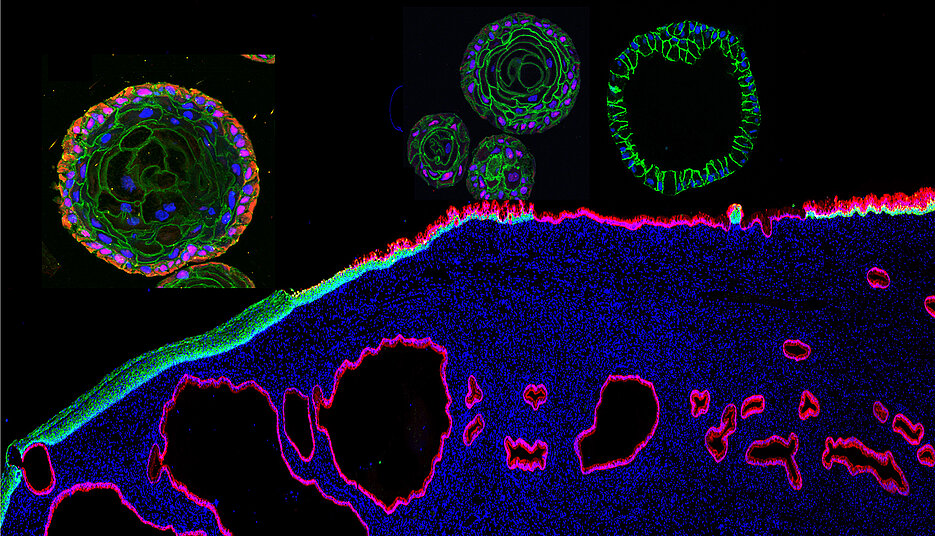How do tumours develop in the cervix? Many new details are now known about this question. This is also thanks to Dr. Cindrilla Chumduri from the Biocentre at the University of Würzburg.

Organoids are increasingly being used in biomedical research. These are organ-like structures created in the laboratory that are only a few millimetres in size. Organoids can be used to study life processes and the effect of drugs. Because they closely resemble real organs, they offer several advantages over other cell cultures.
Now there are also organoid models developed for the cervix. This part of the female body is particularly at risk to develop cancers. By creating novel organoid models, a group led by Cindrilla Chumduri (Würzburg), Rajendra Kumar Gurumurthy (Berlin) and Thomas F. Meyer (Kiel) have established a unique approach to studying the biology of the cervix and identify key turning points in cancer development.
In results published in the journal Nature Cell Biology, the researchers used the organoids to identify stem cells of the healthy cervix and the changes that arise during metaplasia, an early stage of carcinogenesis.
How precancerous cells develop
The cervix consists of two regions covered by different types of epithelial cells: multilayered squamous and single-layered columnar epithelia that merge at transition zones. These transition zones are hot spots for infection-induced cancer development.
However, an important precancerous condition at these sites is the occurrence of metaplasia, a process whereby the non-resident epithelium replaces the resident epithelium. The researchers have now revealed the origin of these metaplastic cells and how they are regulated.
For the first time, the researchers have created a complete cellular atlas of the uterine cervix. They discovered that the stratified and columnar epithelia at the cervical transition zone arise from two distinct stem cells. The regeneration of these two epithelial lineages and their homeostasis at the transition zone are controlled by opposing Wnt signals from the underlying stromal compartments.
The researchers also showed how quiescent stem cells are activated, that eventually develop into squamous metaplasia replacing resident columnar epithelium. Among other things, they showed that adenocarcinomas and squamous cell carcinomas arise from different stem cell lineages.
This pioneering and comprehensive finding in this study provides critical insights into the cervix biology and the transition points between the healthy and early event of carcinogenesis.
Research on cancer-causing viruses and bacteria
"These fundamental findings form a basis for further understanding of the mechanisms involved in carcinogenesis at these metaplastic sites. To study how human papillomavirus (HPV), together with superseding bacterial infections, plays a key role in transforming cells to malignancy. Additionally, these critical insights can help to develop diagnostics for the early detection of these two tumor forms and new therapeutic strategies," says Dr Cindrilla Chumduri.
The scientist has been leading a research group at Julius-Maximilians-Universität (JMU) Würzburg since 2019, based at the Biocentre, Chair of Microbiology. Prior to that, she conducted research in Berlin for eight years, first at Max Planck Institute for Infection Biology, then at Charité Universitätsmedizin.
At JMU, the researcher has found an excellent environment for her work. Her research focuses on understanding the interaction of pathogenic microbes and the host tissue at different stages of cancer development. At JMU, Dr Chumduri continues to use organoid models to decipher mechanisms of carcinogenesis induced by pathogens.
Publication
Opposing Wnt signals regulate cervical squamocolumnar homeostasis and emergence of metaplasia, Nature Cell Biology, 18 January 2021, DOI: 10.1038/s41556-020-00619-0
Funding
The work described here was funded by the German Federal Ministry of Education and Research (BMBF) through the Infect-ERA project CINOCA, and by the German Research Foundation (DFG), Graduiertenkolleg 2157.






